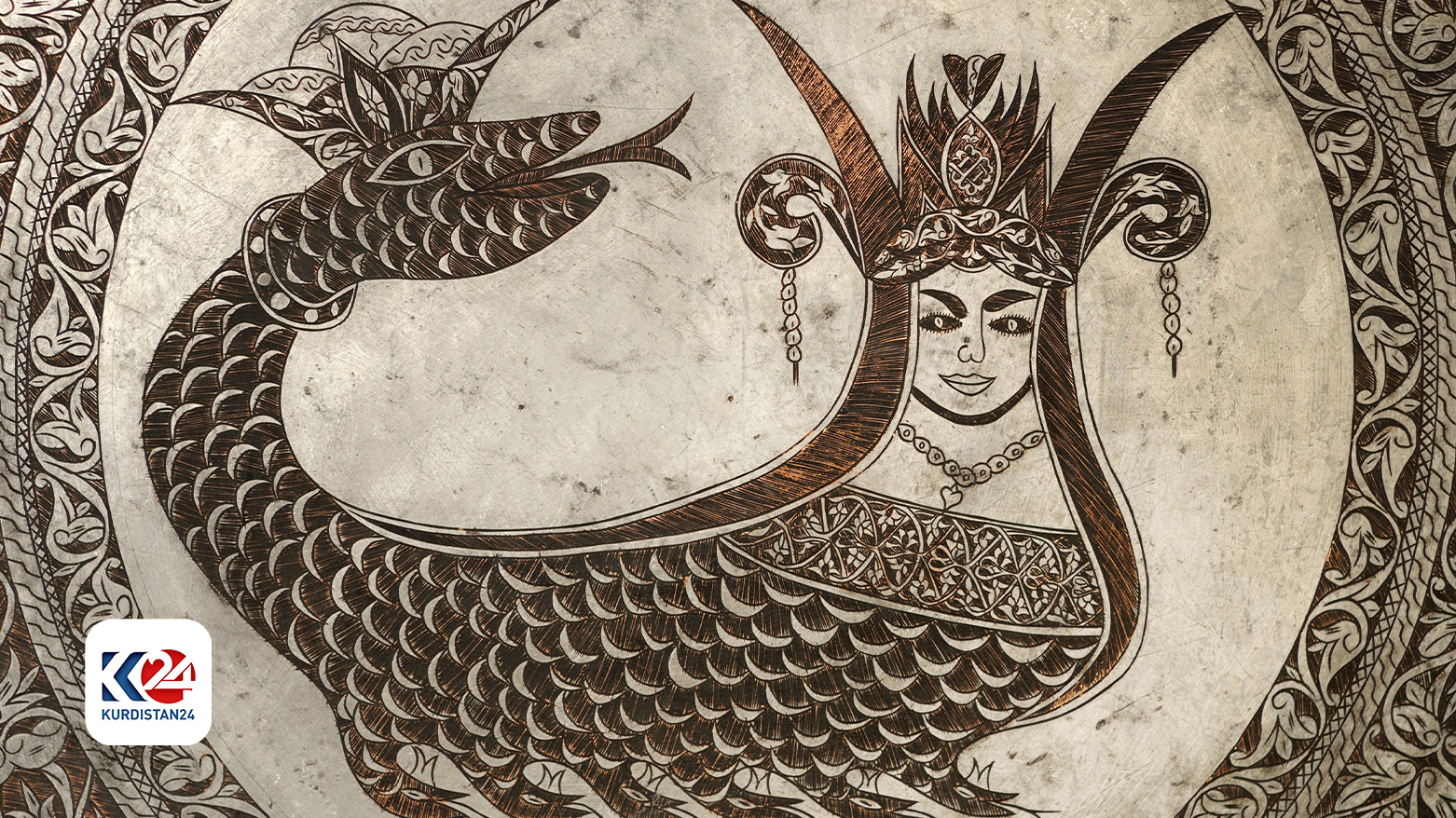The Enduring Legend of Şamaran: Half-Woman, Half-Snake, and Keeper of Wisdom in Kurdish Folklore
For many Kurds, Şamaran is more than myth; she embodies resilience, knowledge, and the complex dualities of life.

ERBIL (Kurdistan34) — Among the historic streets of Mardin, a powerful symbol appears again and again: Şamaran, a half-woman, half-snake figure deeply woven into Kurdish folklore. Known as the “king of snakes” and a goddess of wisdom, Şamaran holds a significant place in the cultural tapestry of the Kurdish people. To explore her myth, BBC’s Nikki Bedi visited local artist Nurrettin Cakmak, whose intricate Şamaran sculptures bring the mythical being to life.
"Şamaran is everywhere in Mardin," Nurrettin explained, welcoming Nikki to his workshop. "She is the goddess of abundance, the guardian against evil spirits, and to some, a symbol of betrayal." His latest sculpture, crafted over three months, is made from discarded objects—spoons, bicycle chains, and exhaust pipes—a testament to Şamaran's timeless appeal in both myth and art.
The origins of Şamaran’s legend lie in a compelling folktale, passed down through generations. The story follows Tahmasp, a young woodcutter, who, deceived and abandoned by friends, finds himself trapped in a well. In desperation, he discovers an entrance to a hidden city ruled by Şamaran, the queen of snakes. Despite her initial mistrust, Şamaran spares Tahmasp's life, taking him in and imparting her wisdom.
Eventually, Tahmasp returns home, keeping her existence a secret. Yet when a king falls ill, a sorcerer claims that only Şamaran’s head can provide the cure. Tahmasp resists revealing her location, but the sorcerer’s relentless pursuit forces him to meet Şamaran again. Understanding her fate, Şamaran instructs Tahmasp to bring her head to the king, ensuring the sorcerer consumes a cup containing her deadly poison. As planned, the sorcerer dies, the king recovers, and Tahmasp, who drinks a third cup infused with wisdom, inherits her knowledge.
Across Northern Kurdistan, the legend of Şamaran takes on various roles, from protector of homes to a symbol of intellectual strength. In Kurdish regions like Kermanshah and Dersim, people honor Şamaran with offerings. Each year, women prepare a ceremonial porridge, "Dakulaney Şamaran," made of wheat, lentils, and spices, distributing it among neighbors to invoke Şamaran’s blessing against snake bites and scorpion stings.
The enduring image of Şamaran has also found a place in Kurdish literature, with authors such as Abdulsamad Yegit exploring her legend in novels like Şamaran. In the Yarsan religion, Şamaran is venerated as a sacred being, embodying wisdom and mysticism. Yarsan religious figures invoke Şamaran in poetic verses, celebrating her essence as one with the natural world.
For many Kurds, Şamaran is more than myth; she embodies resilience, knowledge, and the complex dualities of life. "Her story is about betrayal, wisdom, and sacrifice," Nurrettin said, reflecting on the many meanings of his sculpture. "Şamaran shows us that knowledge has a price, but it is also a gift."
In Mardin’s old neighborhoods, her image—half-woman, half-snake—remains a powerful reminder of the past, whispering ancient truths to those who seek them. For the people of Northern Kurdistan, Şamaran is not just a figure from legend; she is an emblem of wisdom, protection, and cultural identity that endures across generations.
